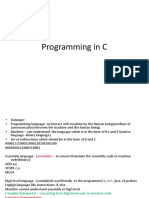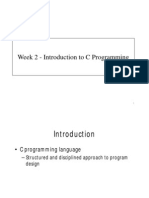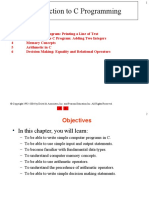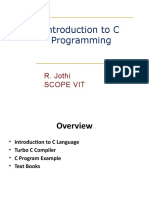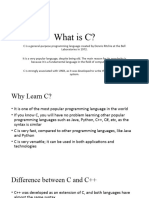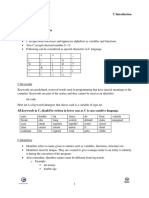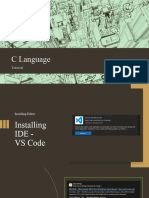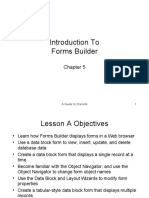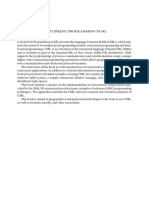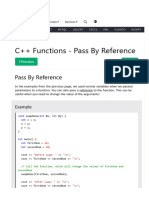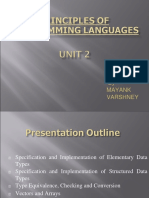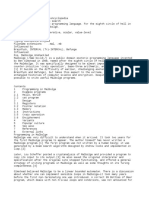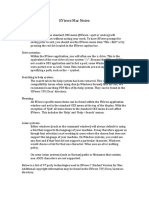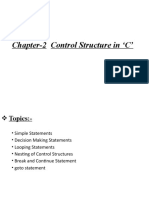0% found this document useful (0 votes)
18 views15 pagesInput Output
This document provides an overview of the printf() and scanf() functions in C programming for input and output operations. It includes examples demonstrating how to use these functions for various data types, such as integers, floats, and characters, as well as explanations of format specifiers and the importance of including the stdio.h header file. Additionally, it touches on ASCII values and formatting options for displaying output.
Uploaded by
hassan01754Copyright
© © All Rights Reserved
We take content rights seriously. If you suspect this is your content, claim it here.
Available Formats
Download as PDF, TXT or read online on Scribd
0% found this document useful (0 votes)
18 views15 pagesInput Output
This document provides an overview of the printf() and scanf() functions in C programming for input and output operations. It includes examples demonstrating how to use these functions for various data types, such as integers, floats, and characters, as well as explanations of format specifiers and the importance of including the stdio.h header file. Additionally, it touches on ASCII values and formatting options for displaying output.
Uploaded by
hassan01754Copyright
© © All Rights Reserved
We take content rights seriously. If you suspect this is your content, claim it here.
Available Formats
Download as PDF, TXT or read online on Scribd
/ 15







